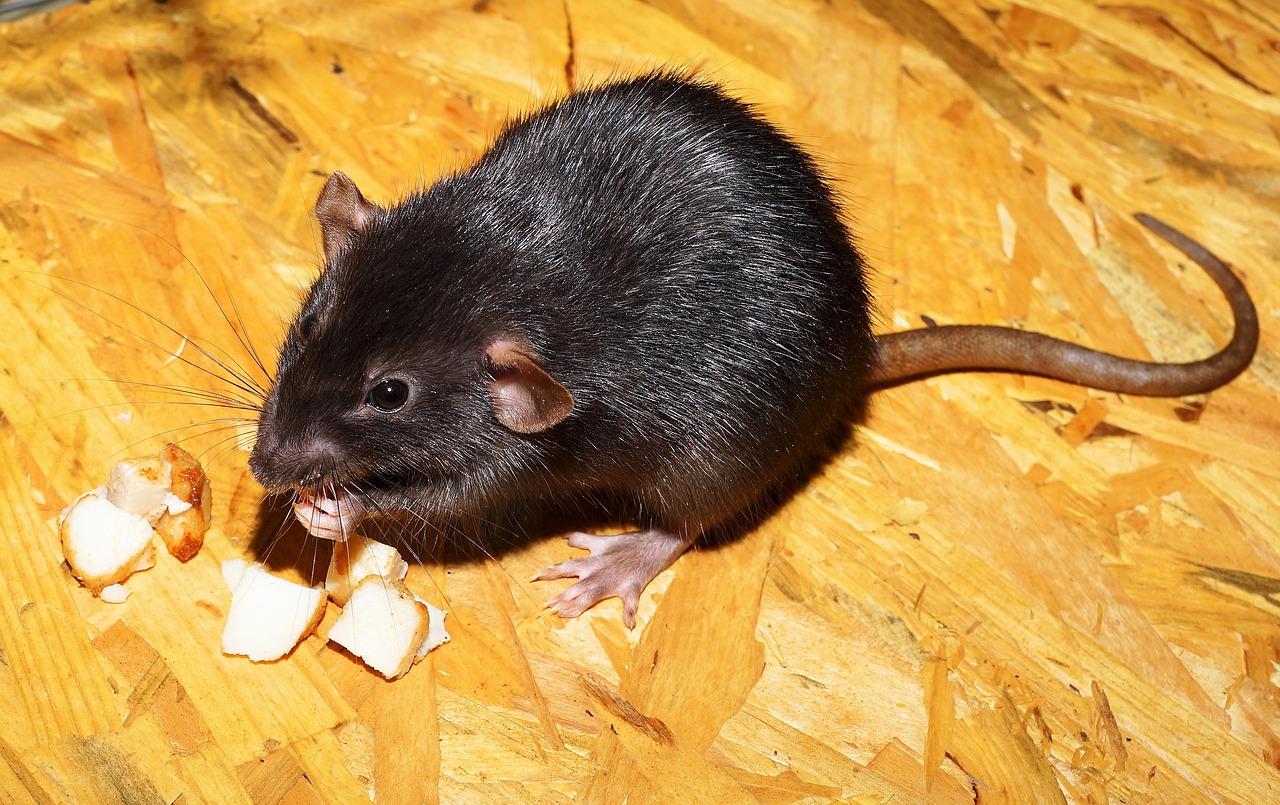- Roof rats are agile climbers that infest attics, rooftops, and high areas, causing serious health and property risks if left unchecked.
- Signs of infestation include scratching noises, droppings, gnaw marks, grease trails, and nests made of insulation or fabric.
- Quick action is crucial since roof rats breed rapidly and can spread disease while damaging wiring and insulation.
- The most common control methods include snap traps, live traps, glue boards, poison baits, ultrasonic repellents, and professional pest control.
- Exclusion—sealing entry points with steel mesh, fixing roof gaps, and trimming branches—is the most effective long-term solution.
- A combination approach works best: inspect, seal entryways, use traps, maintain sanitation, and seek professional help if needed.
- Poison-free solutions are possible and often safer, relying on traps, exclusion, sanitation, and natural deterrents to keep roof rats away.
Roof rats can turn your home into their playground before you even realize it. Unlike their ground-dwelling cousins, these agile rodents are climbers that prefer attics, rafters, and rooftops. Once inside, they chew wires, damage insulation, and leave droppings that can carry disease. If you’ve spotted signs of activity, you’re probably wondering the big question: how to get rid of roof rats, and which method actually works best?
This guide walks you through every option—from traditional traps to modern repellents—so you can choose the best method for your home.
What Exactly Are Roof Rats?
Before jumping into roof rat control methods, it helps to understand what makes roof rats different.
- Appearance: Sleek bodies, pointed noses, large ears, and tails longer than their bodies.
- Habitat: Prefer high places like trees, rooftops, attics, and even palm fronds.
- Diet: Omnivorous, but they love fruits, seeds, grains, and pet food.
- Behavior: Nocturnal, fast breeders, and extremely cautious of new objects in their environment.
Because they reproduce quickly and avoid unfamiliar items, getting rid of roof rats can be tricky.
Signs You Have Roof Rats

Sometimes you’ll never see the rats themselves, but their presence leaves plenty of clues:
- Scratching or scurrying noises in the attic or walls at night
- Droppings about half an inch long with pointed ends
- Gnaw marks on wires, wood, or food packaging
- Grease marks along beams or walls from their oily fur
- Nests made from shredded paper, insulation, or fabric
- Strange smells, often musky or urine-like
If several of these signs are present, it’s time to act fast.
Why Is It Important to Get Rid of Roof Rats Quickly?
Roof rats aren’t just annoying—they pose serious risks:
- Health concerns: They can spread salmonella, leptospirosis, and other diseases through droppings and urine.
- Property damage: Their constant chewing can lead to electrical fires, ruined insulation, and weakened wood.
- Rapid reproduction: A single pair can produce dozens of offspring in a year, turning a small problem into an infestation.
Because of these dangers, waiting too long can make control more expensive and complicated.
What Are the Main Methods to Get Rid of Roof Rats?

There isn’t a single “one-size-fits-all” solution. Homeowners usually combine several approaches for best results. Let’s break down the most common methods and weigh their pros and cons.
1. Snap Traps
Traditional snap traps remain one of the most effective tools.
- Pros:
- Quick and humane if set correctly
- Affordable and reusable
- Easy to check and dispose of captured rats
- Cons:
- Rats are trap-shy and may avoid them at first
- Need careful placement in areas with no pets or kids
- May require many traps for large infestations
Best Use: Along runways, beams, or attic entry points. Peanut butter, nuts, and dried fruit make excellent baits.
2. Live Traps
If you prefer not to kill rats directly, live traps capture them for relocation.
- Pros:
- Humane, avoids killing
- Can confirm infestation visually
- Cons:
- Relocating rats is often illegal or ineffective
- Rats may return or spread to other areas
- Requires daily monitoring
Best Use: Small infestations where homeowners prefer a non-lethal approach.
3. Glue Boards
Sticky traps capture rats by immobilizing them.
- Pros:
- Cheap and easy to set
- Can show activity if rats walk over but escape
- Cons:
- Considered inhumane as rats suffer before dying
- Less effective for larger rats
- Messy and unpleasant to handle
Best Use: Monitoring activity rather than long-term control.
4. Poison Baits
Rodenticides are widely used but come with risks.
- Pros:
- Effective for large infestations
- Can reduce populations quickly
- Cons:
- Dangerous for pets, kids, and wildlife
- Rats may die in hidden spaces, causing odor problems
- Not a long-term solution unless paired with exclusion methods
Best Use: Only under professional supervision in secure bait stations.
5. Ultrasonic Repellents
These electronic devices emit high-frequency sounds designed to drive rodents away.
- Pros:
- Safe for humans and pets
- Easy to plug in and use
- Cons:
- Effectiveness varies greatly
- Rats may adapt or ignore the sounds
- Not a standalone solution
Best Use: Supplementary measure alongside traps and exclusion.
6. Exclusion and Sealing Entry Points
The most effective long-term solution is preventing access.
- Seal holes larger than a quarter inch with steel wool or metal mesh
- Repair gaps in roofing, soffits, and eaves
- Install door sweeps and vent covers
- Trim back tree branches touching your roof
- Pros:
- Stops future infestations
- Works without chemicals or traps
- Cons:
- Time-consuming
- Requires careful inspection
Best Use: Always, no matter which method you choose for elimination.
7. Professional Pest Control
Sometimes the smartest move is calling the experts.
- Pros:
- Access to stronger tools and methods
- Experienced in finding hidden nests
- Can combine removal with prevention strategies
- Cons:
- More expensive than DIY
- Requires scheduling and follow-up visits
Best Use: Heavy infestations, recurring problems, or when safety is a concern.
Which Method Works Best for Roof Rats?
If you’re asking which method truly works best, the answer is a combination approach. Roof rats are intelligent and wary, so relying on one tactic rarely solves the problem.
Here’s a practical framework:
- Inspection – Find entry points, food sources, and nesting areas.
- Exclusion – Seal off all possible entryways to stop new rats.
- Trapping – Use snap traps or professional-grade traps in targeted spots.
- Sanitation – Store food securely, clean up clutter, and remove outdoor attractants like fruit or birdseed.
- Professional Help – If the problem persists or is overwhelming.
How to Get Rid of Roof Rats Without Poison
Many homeowners prefer to avoid poison due to safety risks. Effective poison-free methods include:
- Snap traps in secure areas
- Exclusion and sealing holes
- Proper food storage and sanitation
- Encouraging natural predators like owls and snakes (if safe and appropriate)
While poison can wipe out numbers quickly, it doesn’t address the root cause: access and shelter.
What’s the Fastest Way to Get Rid of Roof Rats?
The fastest way often combines snap traps with entry-point sealing. Traps can catch rats already inside, while sealing prevents new ones from coming in. Adding professional help can speed things up even further if the infestation is widespread.
How Do You Keep Roof Rats Away for Good?
Long-term prevention is the real victory. To make sure roof rats never return:
- Keep trees and shrubs trimmed at least 3 feet from the house
- Store firewood and clutter away from exterior walls
- Seal trash cans and compost bins
- Clean up fallen fruit in the yard
- Regularly inspect your roof and attic for new gaps
- Schedule routine pest inspections if you live in a high-risk area
The Bottom Line
So, how to get rid of roof rats—and which method works best? There isn’t a single magic solution. Instead, the best results come from combining methods: seal entry points, use snap traps, maintain good sanitation, and call professionals if needed.
By tackling the problem quickly and strategically, you can protect your home, your health, and your peace of mind. Roof rats may be resourceful, but with the right approach, they don’t stand a chance.
